The Hungarian capital has a little magic up its sleeve – actually, make that a lot. There’s really no shortage of things to do in Budapest.
Here, you can savour steaming plates of goulash, wander through imperial boulevards and watch the sunrise from a Roman thermal bath.
This city wasn’t always one unified capital. In 1873, 3 distinct settlements merged – hilly Buda (the former Hungarian capital), flat Pest (the commercial heart), and ancient Óbuda. Layers of Roman, Ottoman and Habsburg history shape the streets, and each has left its mark in one way or another.
So where should you start? Our travel experts have rounded up the top things to do in Budapest – the iconic sights, lesser-known gems, and local traditions you might not find in a guidebook.
- Explore 3 European capitals on one trip with these tours to Prague, Vienna and Budapest
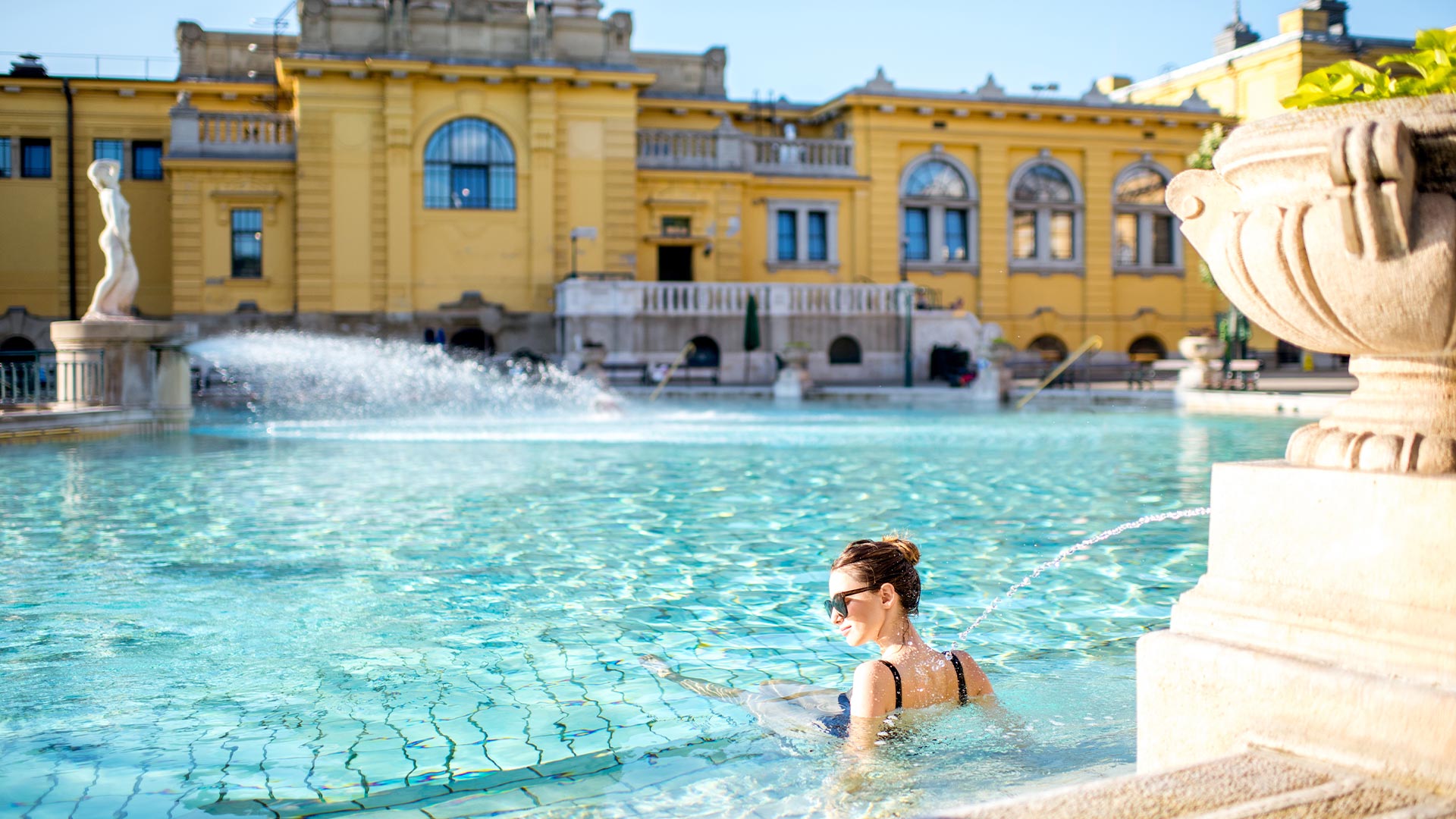
1. Relax in Budapest’s thermal baths
To see what Budapest is best known for, slip into one of its steaming thermal baths. The city sits on 123 natural hot springs, and bathing culture here spans 2 millennia – from Roman times through Turkish occupation to today’s modern spa culture.
Start with Széchenyi Baths. You’ll find it in City Park, near Heroes’ Square and Vajdahunyad Castle. It’s the largest medicinal bath in Europe, and one of the liveliest. Picture warm outdoor pools steaming in the cold winter air, sunshine-yellow walls, and locals playing chess in the water.
If you’re visiting in summer, go early in the day to beat the heat and the queues. Even if you book online, entry may be paused when it reaches capacity.

On the Buda side of the river, you’ll find the elegant Gellért Baths, famous for their stained-glass roof, outdoor wave pool and ornate art nouveau architecture.
Looking for a local favourite? Head straight for the 16th-century Rudas Baths. If you’re up for it, try a contrast bath. The hot-and-cold plunge is said to boost circulation.
Local tip: Traditional baths like Rudas often have single-gender days (women-only on Tuesdays and men-only on most weekdays), so check the schedules beforehand. During these times, swimsuits are optional in the Turkish bath area, and it’s the only time nudity is allowed.
- Ride the rails between iconic cities with these Central and Eastern Europe train tours
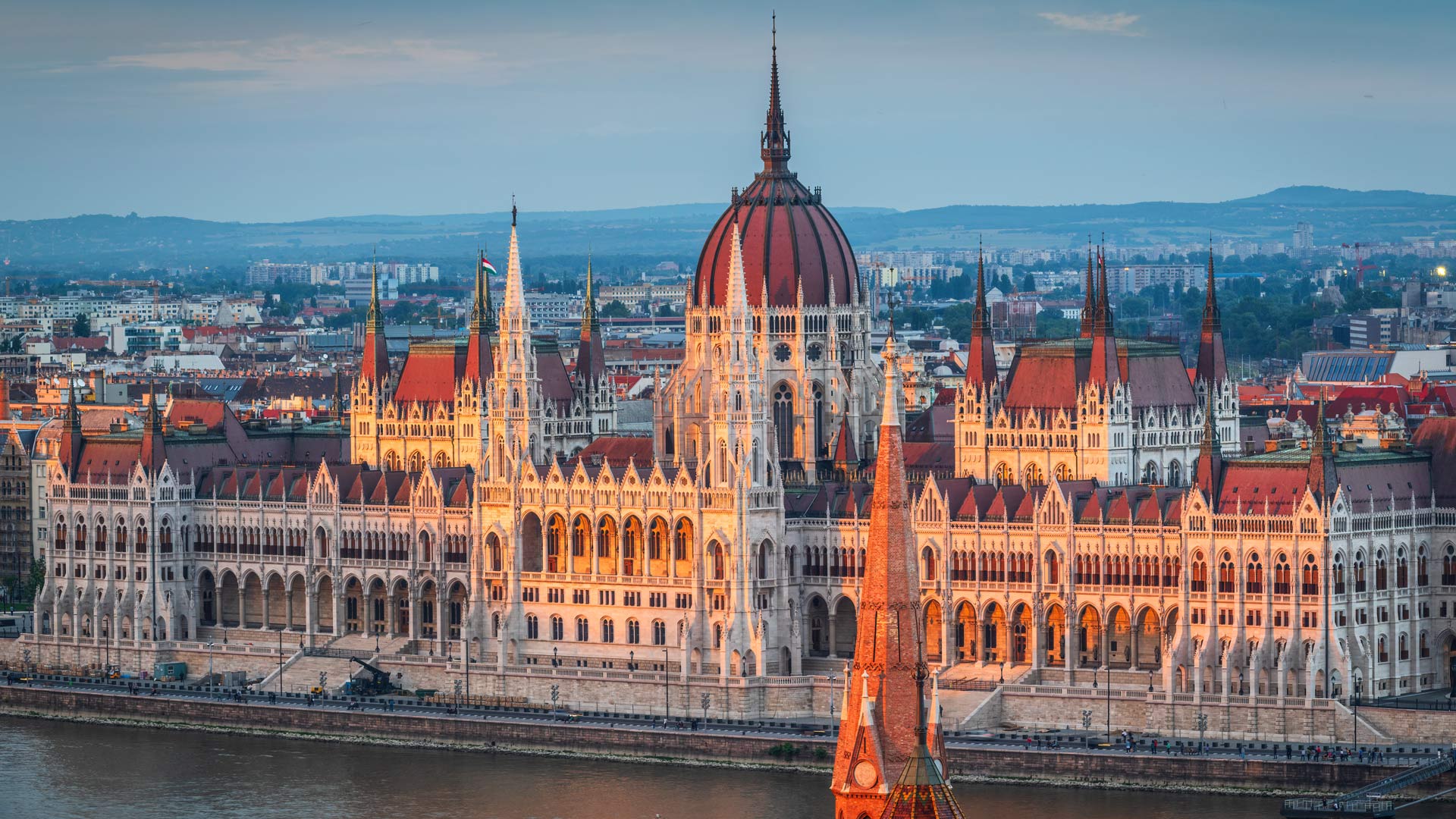
2. Tour the Hungarian Parliament Building
You’ll spot the Hungarian Parliament Building rising over the Danube River like something out of a storybook. It’s massive, ornate, and impossible to miss from the Pest side of the city.
This neo-gothic masterpiece was built in the late 1800s to commemorate Hungary’s 1,000th birthday. And yes, it was designed to impress. Look up and you’ll see a riot of grand arches, pointed spires, and a huge central dome that dominates the skyline.
When you stand beside it, you’ll see just how enormous it really is. In fact, it’s one of the largest parliament buildings in the world.
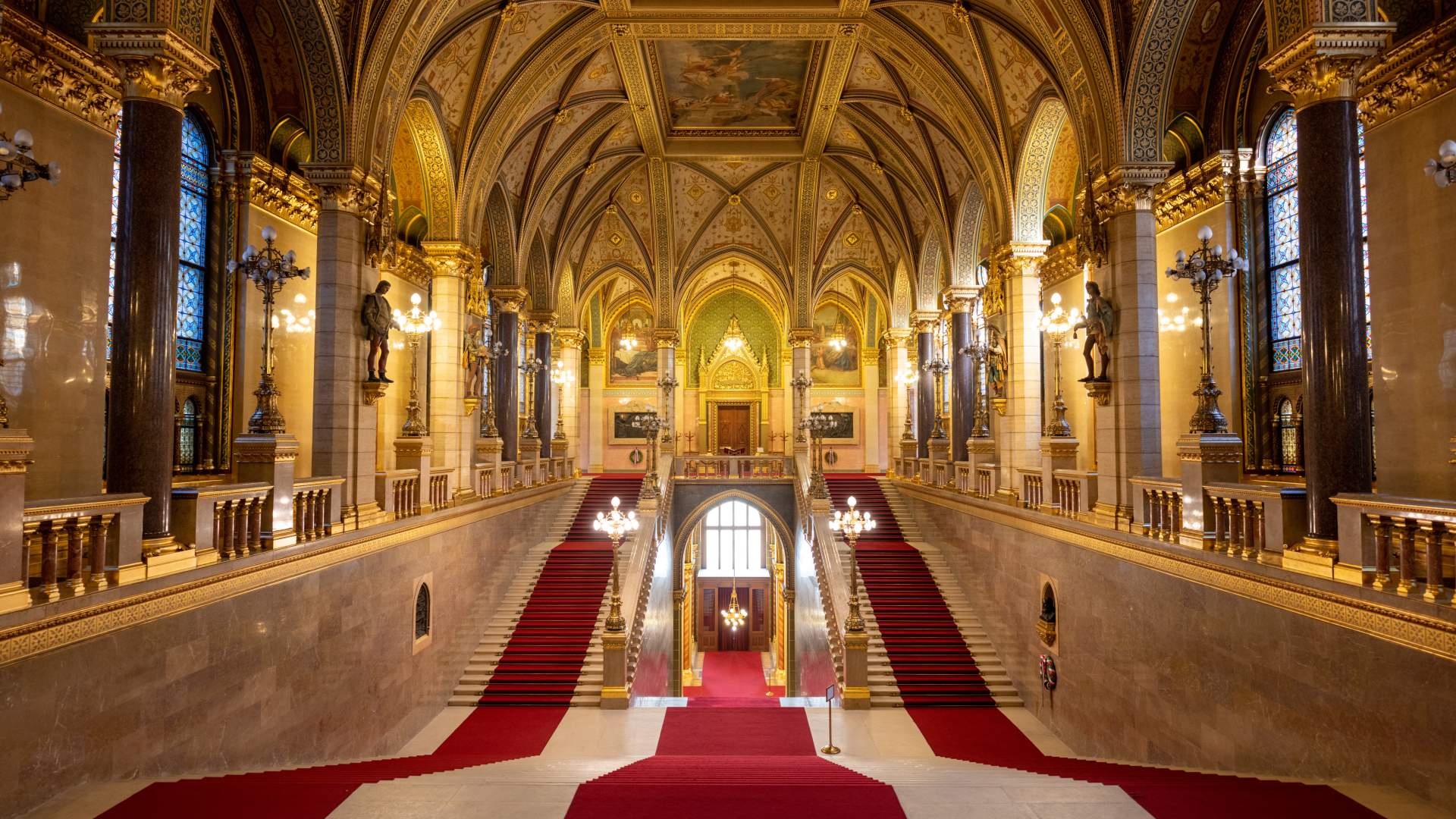
The outside is showstopping. But, when parliament isn’t in session, you can also explore inside on a guided tour. You’ll climb marble staircases, gaze up at gilded ceilings, and see Hungary’s crown jewels – including the Holy Crown of St Stephen.
Local tip: If you want a ticket, book ahead. They often sell out weeks in advance, especially in summer. But there’s a workaround. A few extra tickets are released each morning at 8:00 AM. If you’re up early, swing by around 7:45 AM to grab one.
For postcard-worthy views of the Parliament Building, hop on a Danube river cruise. Day or night, the skyline sparkles from the water – especially when the Parliament lights up after dark.
- Cross borders and cultures on a multi-country Alps tour
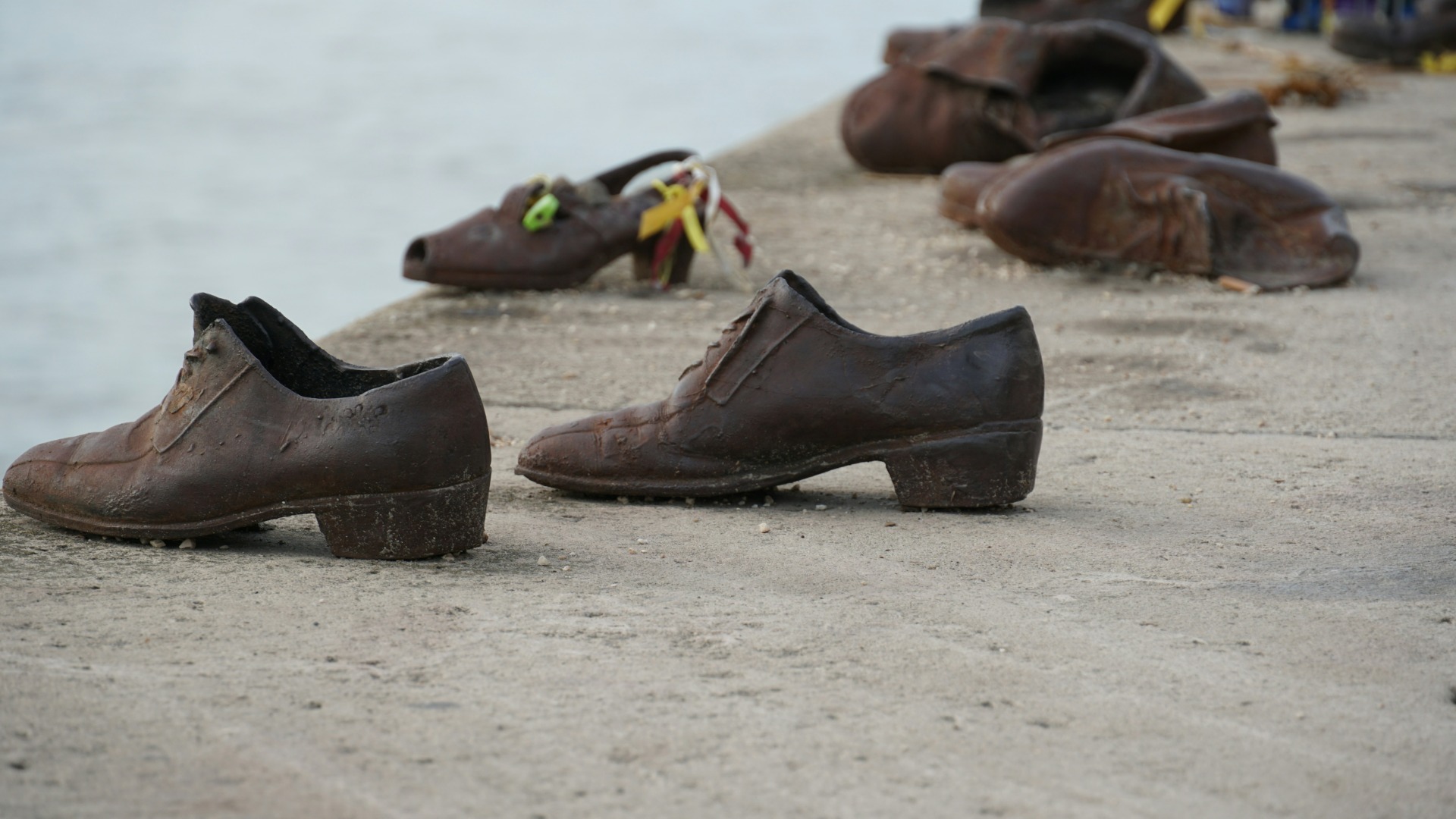
3. Pause at the Shoes on the Danube memorial
Among the places to visit in Budapest, this memorial carries the heaviest weight. A short walk from Parliament brings you to 60 pairs of iron shoes that sit frozen at the edge of the Danube. Some are small, some scuffed. All are empty.
The memorial honours the Jewish men, women and children who were executed here by Arrow Cross militiamen between 1944 and 1945. The victims were forced to remove their shoes – valuable items during wartime – before being shot into the river.
Today, you’ll often see flowers and candles filling the shoes. Locals and visitors leave them as a sign of respect.
A small plaque nearby explains the memorial, created in 2005 by Can Togay and Gyula Pauer. You’ll find it on the Pest side of the river, between the Parliament Building and the Chain Bridge. No ticket needed. Just time, and a moment of stillness.
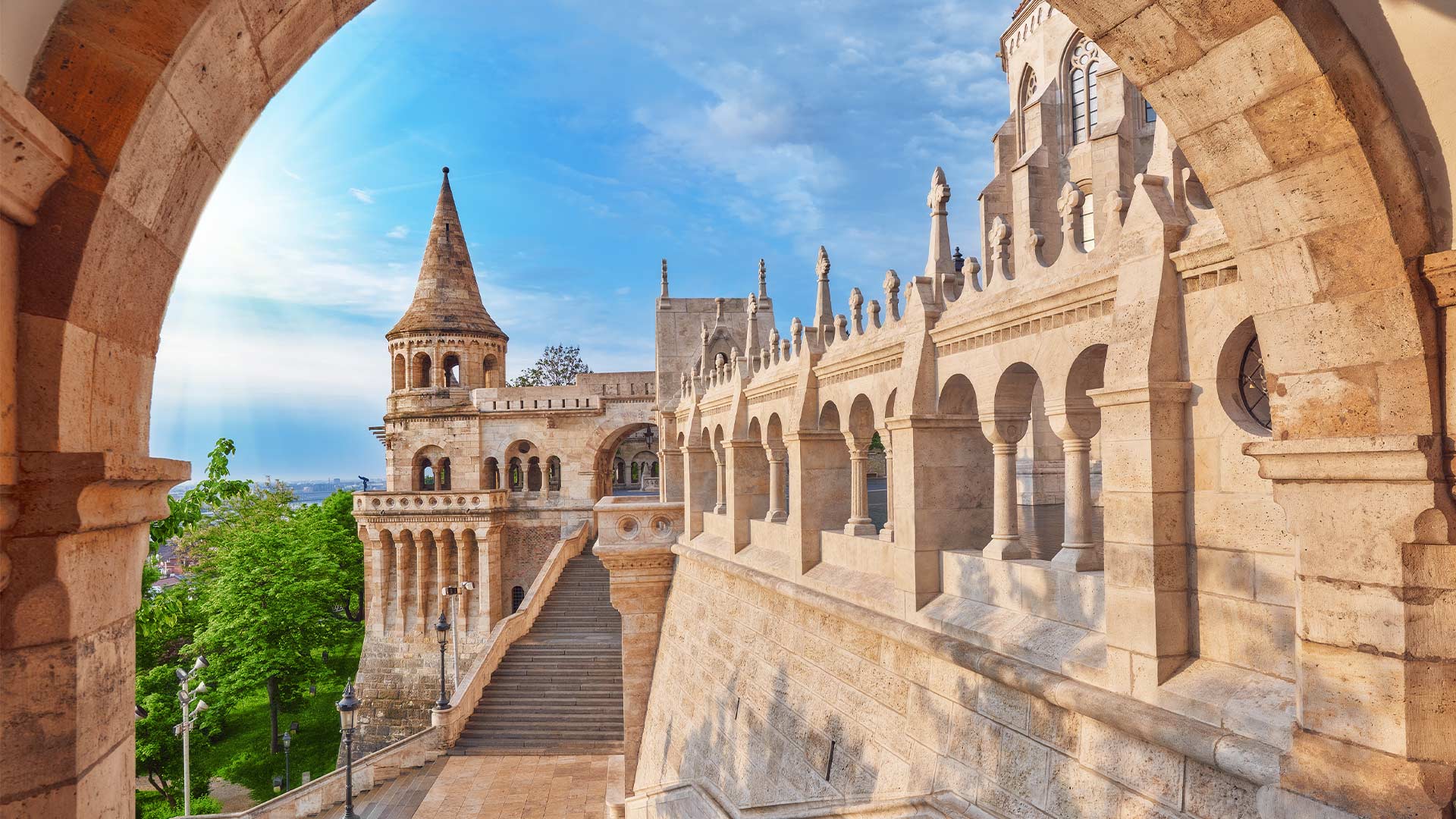
4. Explore the Castle Hill district
Castle Hill district is where you can find some of the best views in Budapest. Ride the historic funicular from the Chain Bridge and soak up panoramic views as you ascend.
At the top, you’ll find Buda Castle, also known as the Royal Palace, home to the Hungarian National Gallery and the Budapest History Museum. The grounds are open and free to wander.
You could easily spend half a day here, popping into museums, admiring the views, or just people-watching in the courtyards. If history’s your thing, check out the Hungarian National Museum down in the city centre. It’s a treasure trove of relics and royal artefacts.
Local tip: There’s a quiet shortcut into the castle from a flower shop near the Hilton Hotel on Hess András tér. Head in, turn right, and take the stairs down.
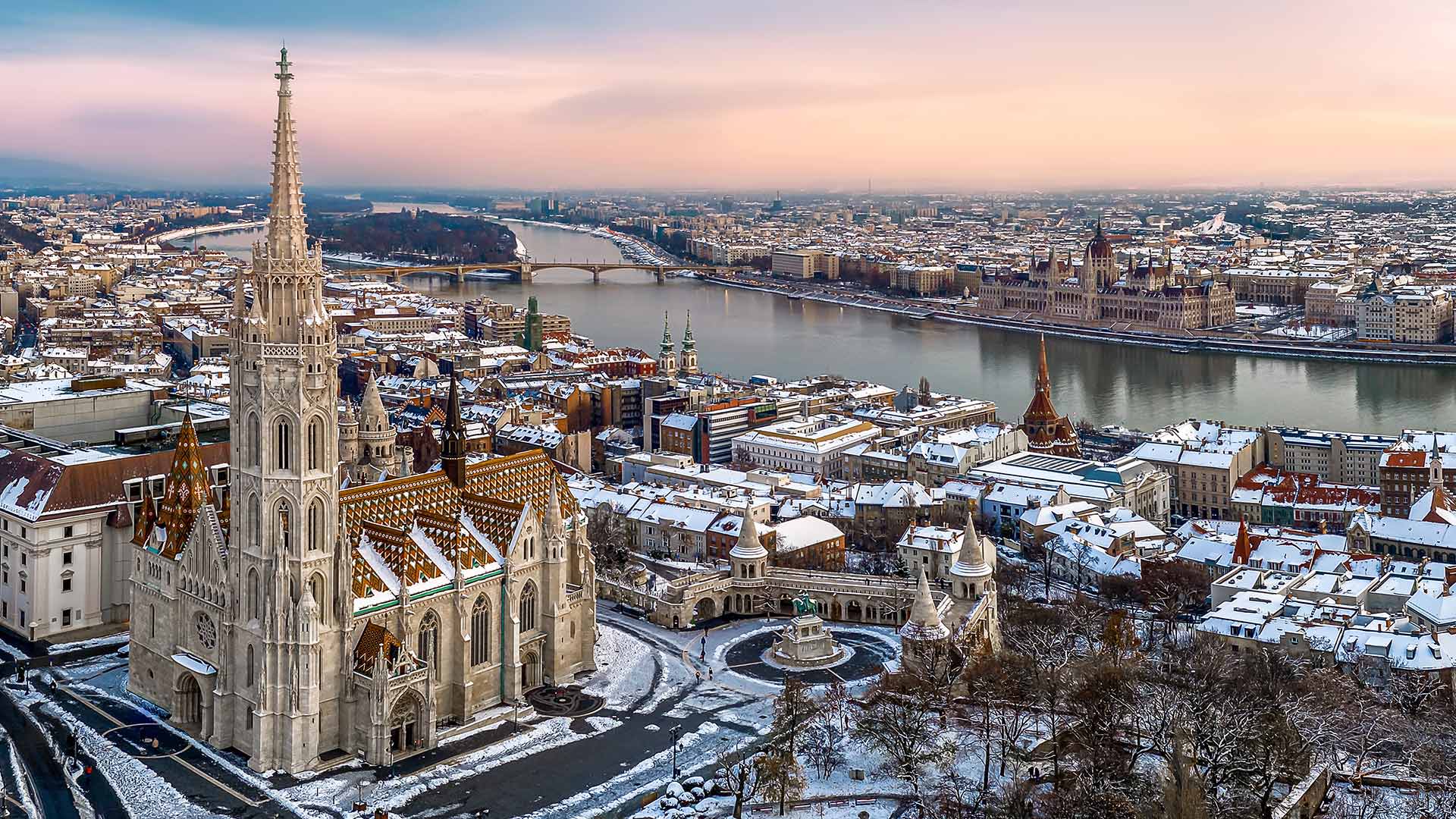
A few steps away, you’ll find the Fisherman’s Bastion, complete with curving ramparts and fairytale turrets. Below, you’ll see the Parliament, rooftops, and the Danube carving through the city.
While you’re here, stroll along the old ramparts and explore the quiet cobbled streets. You’ll find cafés dotted around, including Ruszwurm. The oldest pastry shop in Hungary, stop in for a slice of cream cake so light it barely survives the fork.
Right next to the Bastion is Matthias Church. This striking 700-year-old building has a colourful tiled roof and golden interior.
- Let local experts lead the way on a small group tour of the Alps

5. Visit St Stephen’s Basilica
Right in the heart of Pest, you’ll find St Stephen’s Basilica. Named after Hungary’s first king, this is the city’s largest church and one of its most recognisable landmarks.
St Stephen’s Basilica is simply massive. Dripping in gold trim and held up by marble pillars. It’s the kind of place where visitors instinctively lower their voices.
In a quiet side chapel, you’ll find something a little unusual – the mummified right hand of King Stephen, displayed in a glass case.
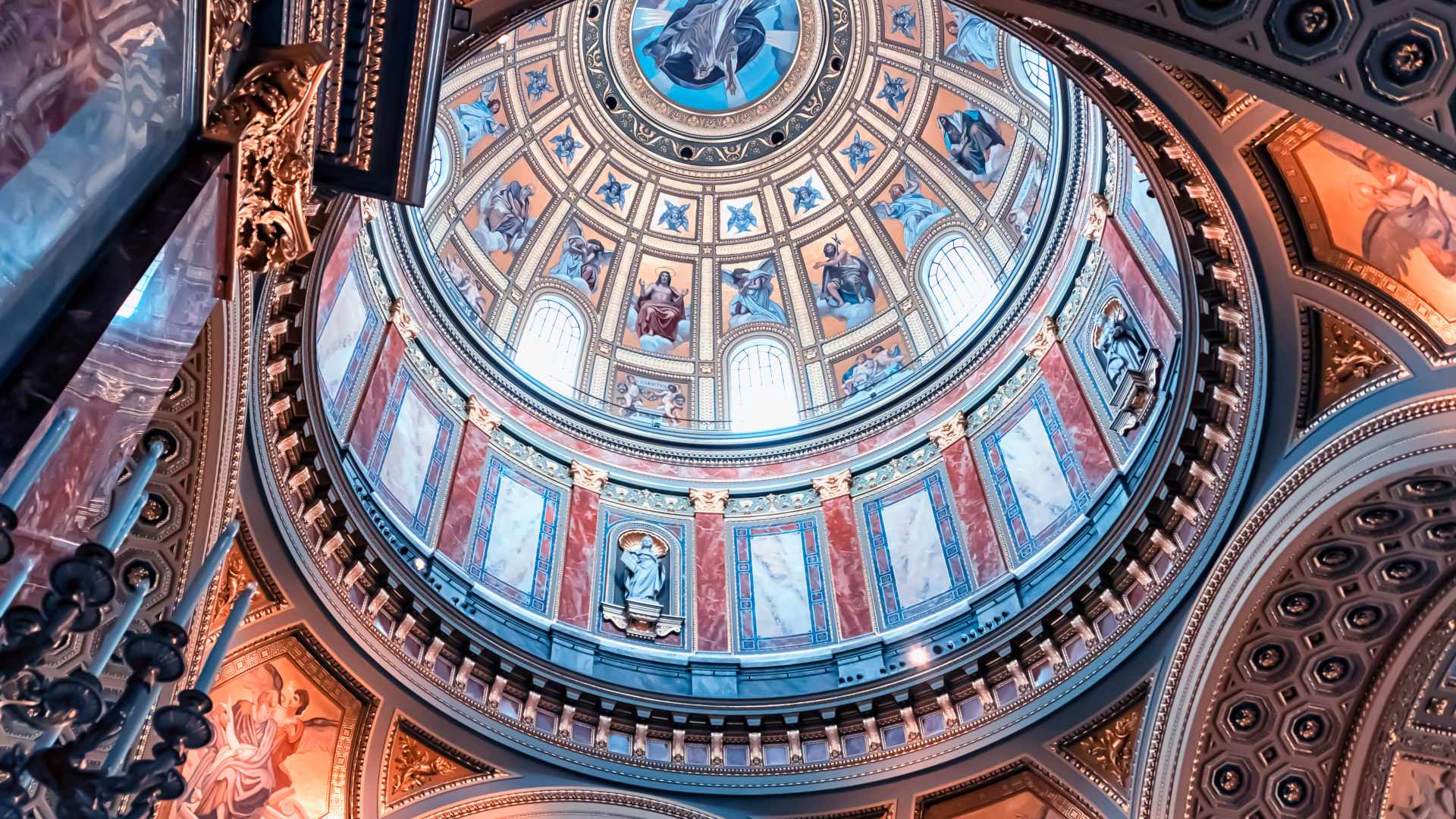
When you’re ready, head up to the observation deck at the top of the dome. It’s 65 metres (213 feet) high and offers sweeping views of the city. On a clear day, you can see the rooftops of Pest, the Danube River, and the hills of Buda in the distance.
It’s free to enter the main basilica, though a small donation is appreciated. But there is a small fee to access the dome viewpoint of the Basilica, and an elevator, if you don’t fancy the stairs.
Local tip: The basilica sometimes hosts evening organ recitals and choir performances. Be sure to check the Budapest concert schedule to find out what’s coming up.
Outside, Szent István tér, a small town square, is a great place to grab coffee and watch the world go by. And if you’re visiting during November or December, you’ll find a Christmas market here, complete with a skating rink and twinkling lights.
- Make the festive season magical with these winter tours of the Alps
- Related: Top European Christmas markets – Your complete guide
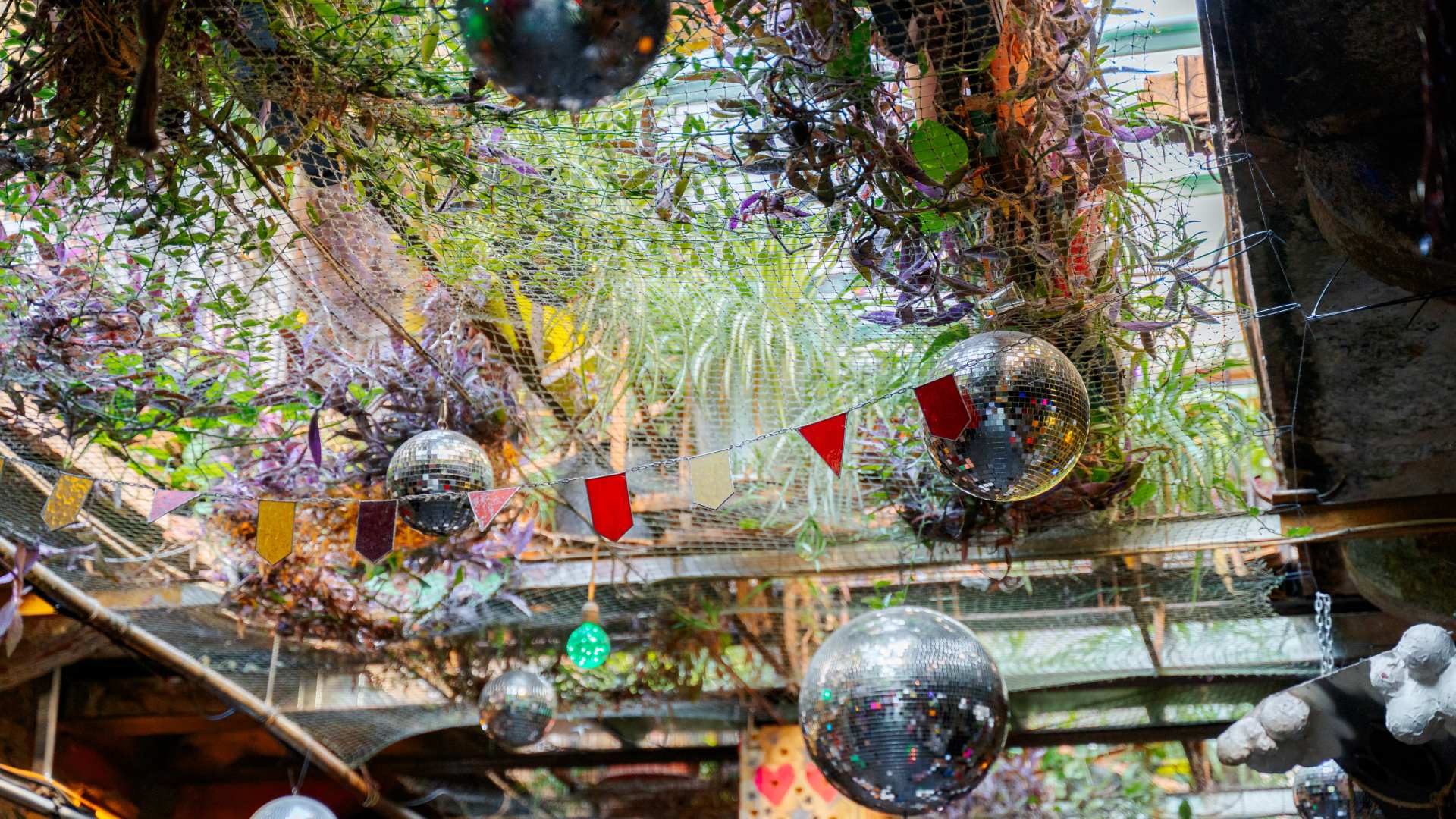
6. Get lost in the ruin bars
When the sun goes down, Hungary’s capital doesn’t slow down. For things to do in Budapest after dark, start with the Jewish Quarter’s famous ruin bars.
These bars popped up in the early 2000s, when locals started turning abandoned buildings into creative hangouts. You’ll see peeling walls and mismatched furniture made from whatever was lying around. But somehow, it works. And it’s become one of the best things to do and see in Budapest – even if you’re not a big drinker.
Start with Szimpla Kert. Part art installation, part bar. There’s no real layout – just a maze of rooms full of weird clutter and laughter. Set in a former stove factory, you can sip a beer in a bathtub, listen to live music or just wander around taking it all in.
Local tip: On Sundays, Szimpla hosts a farmer’s market with local food and handmade goods. Perfect if you’re more of a morning person than a night owl.

Most bars have no cover charge, and the atmosphere is friendly and relaxed. Order a fröccs – wine with soda water. It’s a simple and refreshing drink.
Local tip: If you want to toast like a Hungarian, skip clinking your glass. It’s a nod to a 19th-century tradition – not a strict rule, but worth knowing. Just raise your glass and say “Egészségedre!” (pronounced “E-gesh-SHE-ged-REH”), meaning “to your health”.
The Jewish Quarter is also packed with food stalls, cafés and street art, so it’s worth exploring by day too. And if bars aren’t your scene, join a guided evening tour instead. You’ll get a deeper look at the area’s history, including the Great Dohany Street Synagogue, and still feel the buzz of Budapest after dark.
- Experience cities like Budapest, Vienna and Prague on a Central and Eastern European tour
- Related: Visiting Europe from the USA – Traveller stories
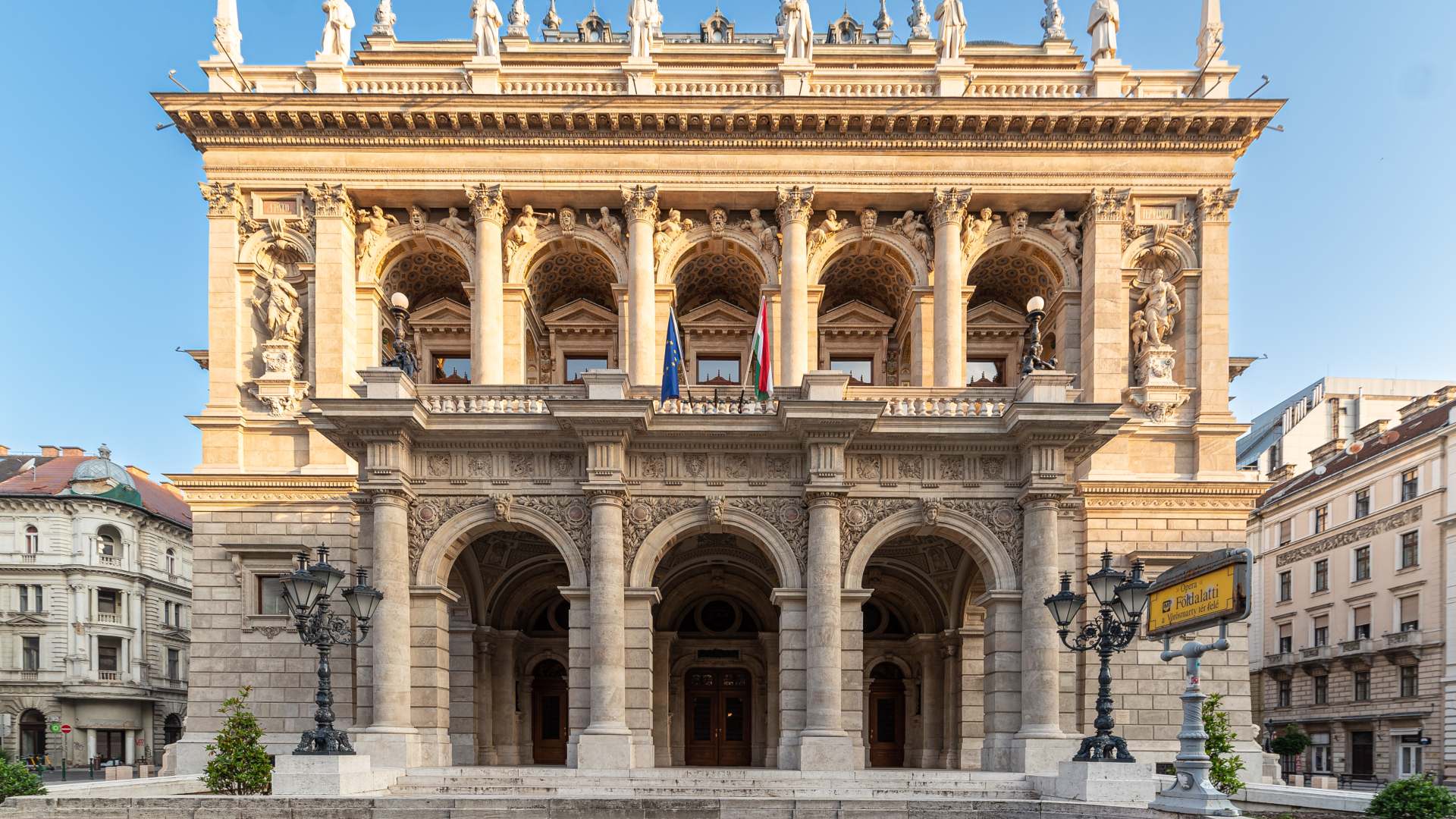
7. Step inside the Hungarian State Opera House
If you’re after elegance, the Hungarian State Opera House delivers. Built in 1884, it’s an architectural love letter to excess. Emperor Franz Joseph had a hand in the design, with one important request – the opera house had to be larger than Vienna’s.
After a complete restoration, it looks just as dazzling as the day it first opened. Marble staircases. Velvet seats. Frescoes of Olympian gods glaring down from the dome.

You have 2 ways to experience it. By day, join a 45-minute guided tour. These run in multiple languages and usually end with a mini-performance by a professional opera singer. Inside, you’ll spot the royal box, VIP rooms, and the entrance foyer where guests once arrived by horse-drawn carriage.
By night, take a seat for a live show. Whether it’s an opera or ballet, tickets are surprisingly affordable. Even the best seats are a great value compared to venues in Vienna or Paris. And there’s space for over 1,200 theatre-goers.
Local tip: There’s no strict dress code, but business casual is best. You’ll see a mix of sharp suits and smart jeans.
- Find a festive sparkle on a European Christmas market tour
- Related: Best places in Europe for Christmas
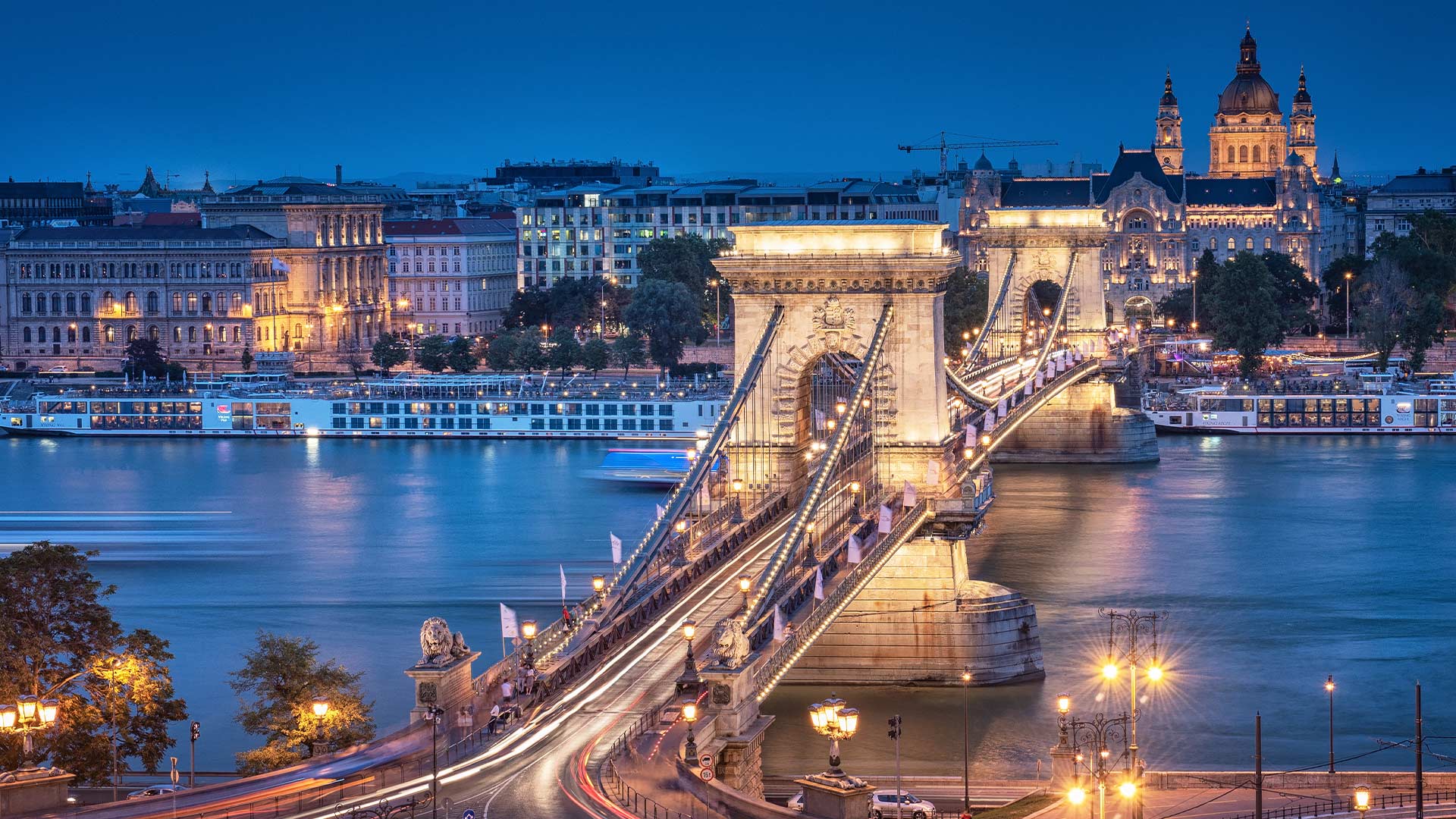
Discover the best of Budapest with Nordic Visitor
Imagine soaking in steaming rooftop baths, unwinding fröccs in hand at a lantern-lit ruin bar, or enjoying a river cruise on the Danube. And this is just a taste of what your escape to Budapest could look like.
Budapest’s public transport is reliable and wallet-friendly. You can easily reach most sights, including Castle Hill and the thermal baths, by bus, tram or metro. But one of the best ways to explore the Hungarian capital is by combining it with other top European cities.
With these tours to Vienna, Prague and Budapest, a dedicated travel consultant will plan a seamless multi-country getaway for you. They’ll arrange handpicked accommodation, prebook train tickets and tailor your trip with optional activities to suit your interests.
Get in touch and bring your Central Europe adventure to life with help from our trusted travel experts.
